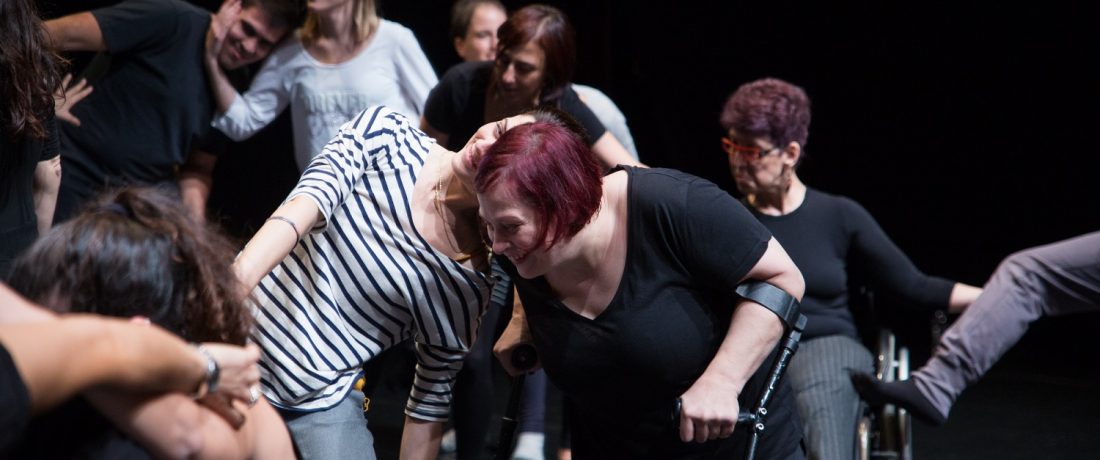
Physicalising Emotions
TARGET GROUP
Adults with and without disabilitiesPARTICIPANTS
18-22DURATION
1 hour 45 minutesORGANIZATION
Stopgap Dance CompanyGoal - Essential question
A creative workshop about physicalising emotions, interacting and responding with a partner or larger group.
Warm up (10 minutes)
Mobilization/ improvisation-based warm up to prepare the body (including the face) for movement. Try exploring different qualities of movement working through different body parts, progressing to whole body movement.
Outcome: To warm up the body , prepare to be responsive and explore different qualities of movement.
Noticing and Recreating (15 minutes)
Travel around the space. Pay attention to your own physicality and make clear decisions on the way you are moving, slightly exaggerate these decisions. Take time to look around the group and be aware of everyone else’s way of moving. Choose one person and study their physicality, think about what their character is like, then reflect this in your own body. Gradually start to exaggerate this new physicality. Continue to repeat the process of studying someone else’s physicality and taking it on to your own body and exaggerating it.
Progression: Start to find and develop a way of travelling and physicality that is not in the room. Try different options. Each time thinking about the small details as well as the overall character.
Outcome: Awareness of yourself and others in the space.
Emotions (15 minutes)
Think of various emotions and when you are ready, try to recreate these physically, focusing on the physicality, dynamic and movement quality. Create scenarios where people can meet in the space and communicate emotions physically to each other. Give space for play; add options for a third, fourth person to get involved.
Progression: Allow the emotions to morph with the other people responding. Challenge dancers to remove facial expressions and place full focus on physicality.
Outcome: Being able to shift between physicalities with emotional engagement.
Mirroring| in duets (10 minutes)
Facing a partner in any position, start to take in their face, their body language and all the details. Movement begins to happen between partners, mirroring the actions as close as possible, trying to be identical.
Outcome: Attention to detail in combination with movement.
Creating from a memory (15 minutes)
Every participant chooses a strong memory. This could be of an event or experience. It is best if there is a short story or journey to this memory. Remember how it made you feel. From this memory, start creating a short phrase of movement, focusing on physically portraying the emotions of the situation,rather than acting it out. Find the emotional journey. Play with different endings or resolutions to the memory, before setting the sequence.
Outcome: Establish a set sequence based on emotions of a memory.
Interactions | in duets or in small groups (30 minutes)
Share the sequence created in the previous task with your partner or group. Then try swapping emotions with your partner and recreate your own sequence with the new emotion. Once you have developed the new sequence, place them near each other as a duet/trio/quartet. Add reactions, physical connections and initiations between the dancers.
Progression: Removing the physical contact but keeping the intention of any interactions and initiations.
Outcome: Dynamic and considered group work focusing on interaction and response between each other.
Cool down (10 minutes)
Gentle cool down catering for the group’s needs.
